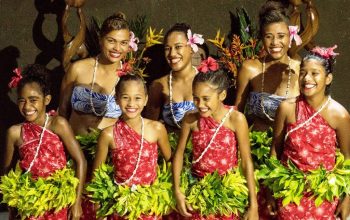Fijian Village Tour
Visit a Fijian village where the local people live in the traditional Fijian community and prepare and produce tapa (bark cloth) and woven mats. The women work hard to prepare the pandanus leaves by boiling them, stripping them with shells to remove thorny edges, then drying the leaves in racks for days until they are dry enough to weave into beautifully handcrafted mats. Learn how the village women use bark from the paper mulberry tree to make tapa. You can buy an authentic tapa or woven mat from the ladies to help the local community. Ladies are asked to have covered shoulders and for all to remove hats and sunglasses when entering the village. Bring your sulu to wear when entering the local villages. This is seen as a sign of respect to our local village neighbours.
Historic Catholic Church
The Holy Cross Church and Wairiki Catholic Mission was built in 1907 and overlooks Somosomo Strait. An important canoe battle took place on this beach in the mid-17th Century. The mission was built to thank the French Missionary who helped the local warriors to win the battle. The Mass each Sunday is in Fijian and the church choir singing is certainly something to experience. The stained glass is imported from France and in the presbytery there is a painting of the famous battle. Take the local open-air bus for an interesting, scenic and slow paced ride to town.



